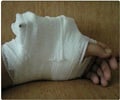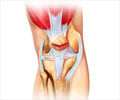The poor state of post-fracture care in the Russian Federation and many other countries in the region is highlighted in preliminary findings from an upcoming new report

Osteoporosis, a disease of the bone which leaves people at increased risk of fracture, is most common in the older population. Population projections for most countries in the region predict that by 2050 there will be a decrease of the total population, but a significant increase (up to 56%) in the percentage of people aged 50 and over. As a result, in the Russia Federation alone the number of people with osteoporosis is expected to increase by a third by 2050.
Despite the major public health burden of osteoporosis-related fractures, the disease suffers from severe under recognition - mainly due to the lack of solid epidemiological and economic data which would help convince health authorities of the urgency of osteoporosis prevention. There are no formal hip or fragility fracture registries in most countries within the region and data on vertebral fractures, the most common osteoporotic fracture, are completely lacking. IOF President John Kanis stated, "It is clear from the key findings that governments need to support wide scale epidemiological studies to collect data on the incidence of osteoporotic fractures."
DXA technology, diagnostic equipment which provides the most accurate method of diagnosis, is usually only accessible in main cities - yet in about one-third of the countries, more than 40% of the population lives in a rural area. In most countries, drug treatment for those at high risk of fracture is not, or is only partially, reimbursed - effectively making treatment unaffordable for the majority of citizens.
Low levels of calcium and vitamin D intake impact negatively on bone health. The average daily calcium intake in nearly all countries outlined in the report falls far below the FAO/WHO recommendations. In addition the majority of populations in the region suffer from severe vitamin D insufficiency. This not only affects fracture rates, but also causes rickets. In recent years the incidence of rickets (pediatric vitamin D deficiency) among Russian infants has ranged from 54% to 66% in some regions.
Although older people who sustain a hip fracture are at increased risk of death and suffer long term disability throughout the world, the report indicates that this problem is far more severe in the Russia Federation and in many other countries of the region. Professor Olga Lesnyak, Vice-President of the Russian Association on Osteoporosis and author of the report, called for action, "There is an urgent need for health care providers to improve post hip fracture surgical care, "she said. While in Western Europe most hip fracture patients receive operative treatment (the optimal standard of care), in the Russian Federation there is an extremely low rate of surgical treatment. Consequently there is high mortality rate after a hip fracture, reaching up to 45-52% during the first year after fracture in some Russian cities. Of the surviving hip fracture patients, 33% remain bed-ridden and 42% are capable of only very limited activities. Only 9% are able to return to the same level of daily activity as they had before their fracture.
Advertisement
Source-Eurekalert










